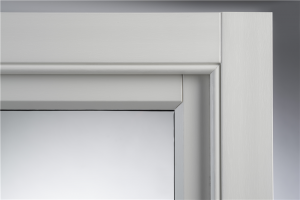Uncategorised
CONDENSATION EXPLAINED
Broadly there are three types of condensation which often get talked about when referring to fenestration products (replacement windows or doors). External, water droplets on the outside of the insulated Glass unit (IGU), internal, water droplets on the room side of the IGU and water droplets inside the panes of the IGU.
Let’s start with some science. The process of water forming on any surface is in essence exactly the same as the creation of fog, but being accelerated by the surface temperature.
Firstly let’s explain Relative Humidity (RH). This is measured as a percentage of when water vapour turns back into a liquid in the atmosphere. The transformation occurs at 100% saturation, and then RH is measured as a percentage of the volume of moisture in the atmosphere of that figure. The difficulty is that this RH changes as the air temperature changes, the higher the temperature the more water vapour, by volume is needed to saturate the atmosphere, but the RH is always measured on the same scale. Therefore as the temperature rises, if no extra water vapour is added to the atmosphere the effect is the RH will fall and vice versa, if the temperature drops and no water is extracted from the atmosphere the RH will rise.
Next we need to understand the Dew Point (DP) The DP is the actual temperature that the transformation of the vapour to a liquid will occur, i.e. RH 100%.
There are many references on the internet for a simple calculation to work out what the DP is depending on the 2 variables, the atmospheric temperature and the RH, which references to some work done by Lawrence, Mark 2005
Dew Point = (Temperature-((100-RH)/5)
E.g. Room temperature 20 degrees Celsius
Relative Humidity 55%
DP = (20-((100-55)/5)
DP = (20-(45/5)
DP = (20 – 9)
DP = 11
In this example any surface which has an 11 degree surface temperature will accelerate the transformation of the water vapour to a liquid by cooling the air immediately in contact with that material to a point that the RH will rise to 100%. This water will adhere to the material surface in the form of condensation droplets.
Visible water inside the IGU is the easiest one to explain; The IGU is made up of multiply panes of glass held apart by a spacer bar which has a small primary seal between the spacer bar and the glass and a larger thick secondary seal around the perimeter of the IGU which is giving structural strength to the IGU, in most cases the IGU is now filled with an inert gas.
The spacer bar is filled with a material called desiccant, a form of silicone gel granules similar to the small packers of material found in the box of a new electrical good. This material is used as it absorbs moisture. Over time the IGU seals will degrade, moisture will work its way through the sealants and eventually the desiccant will become saturated, not able to absorb any more moisture. Eventually the DP inside the IGU will be achieved and the vapour converts back to a liquid on the cold surface. Once this happens the unit has reached the end of its lifetime and needs replacing.
Next is external condensation. Primarily during the spring and autumn months this is more common. Water droplets will be witnessed on the exterior of IGU’s. This has happened because during the day the RH has built up in the atmosphere. Overnight the temperature has dropped to a point where the DP has been reached in the air at the point where it is in contact with cold surfaces, resulting in the formation of water droplet. This can be seen on the exterior of the IGU’s, but also on vehicles and the ground which is also going to be cold by comparison to the day air temperature.
If the outside air temperature falls enough then this will manifest itself into advection fog (condensation in free air).
As the temperature rises during the day the condensation on the outside of the IGU will evaporate away as the RH effectively drops, the DP rises and the atmosphere can support the water vapour.
Lastly internal condensation on the glass (room side). As explained the condensation forming on the glass is the by-product of the transformation of vapour back to a liquid at DP.
Modern day fenestration products are far more airtight then products of years ago, therefore there is very little draughts ventilating the property and reducing the RH.
During our normal living activities, people exhaling vapour, boiling a kettle, cooking, baths / showers, drying clothes on radiators and even house plants are all adding vapour into the property atmosphere, increasing the RH.
This is not necessarily a problem, however if the heating is on a timer and the property cools down at night, then it is plausible that the property atmosphere will reach DP and condensation will form on the cold surfaces, IGU first, them mirrors, china and eventually even the wall corners of the rooms. This is not an issue with any material just our living habits.
There are some particle suggestions that can help with condensation. Ultimately we need to control the RH, simply changing the air supply in the property or extracting high levels of vapour when cooking or showering will help to keep the RH under control.
Furthermore, managing the property heat can also help, if there are high levels of RH in the property, then if the property cools down, the RH will increase and the DP will be achieved. Keeping the property a couple of degrees warmer could eliminate the condensation.
Lastly if all else fails a small dehumidifier will reduce the RH by mechanically extracting the water vapour from the atmosphere.




